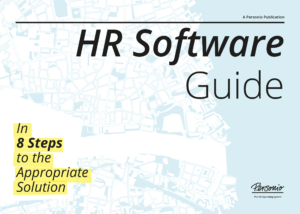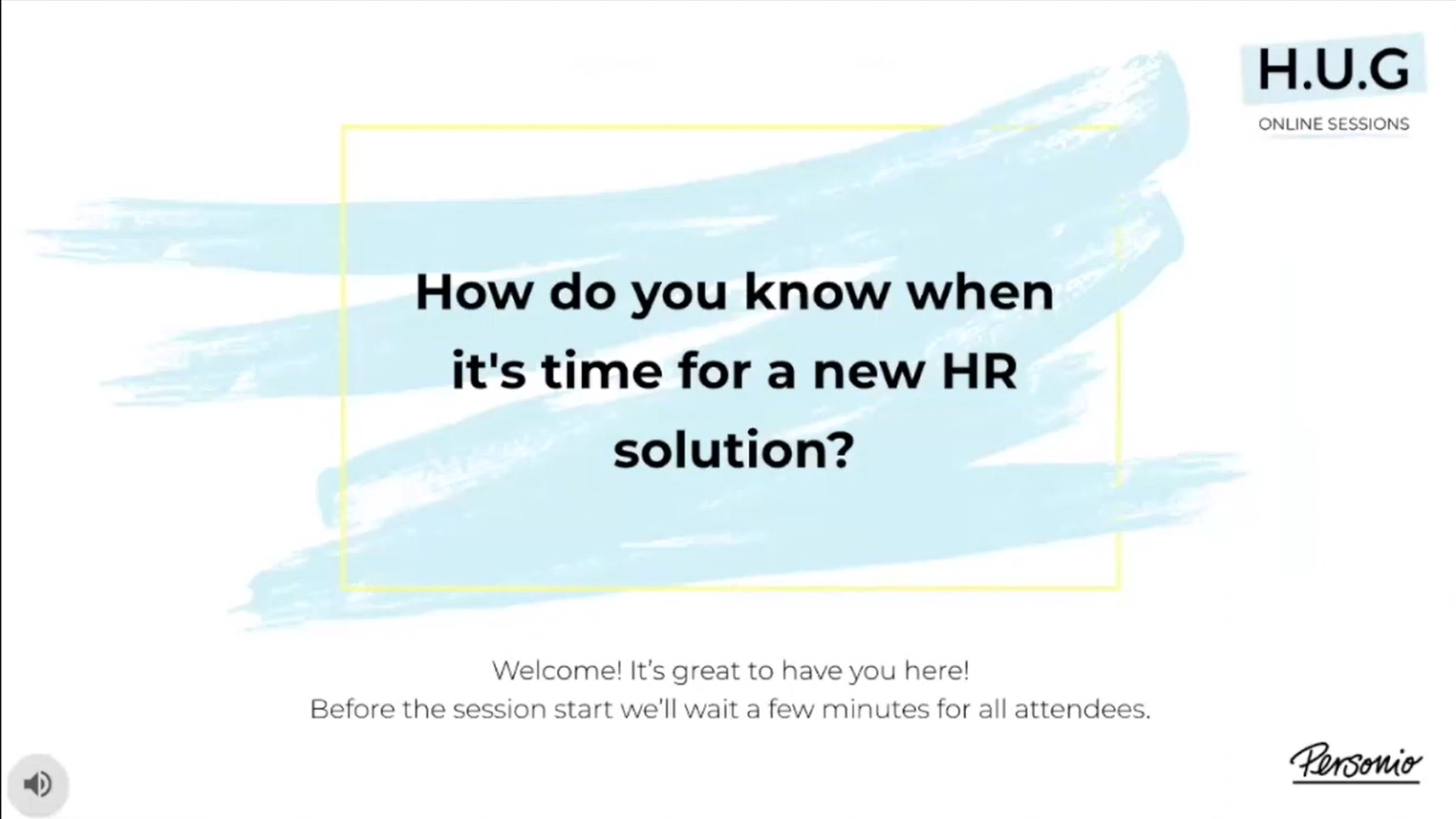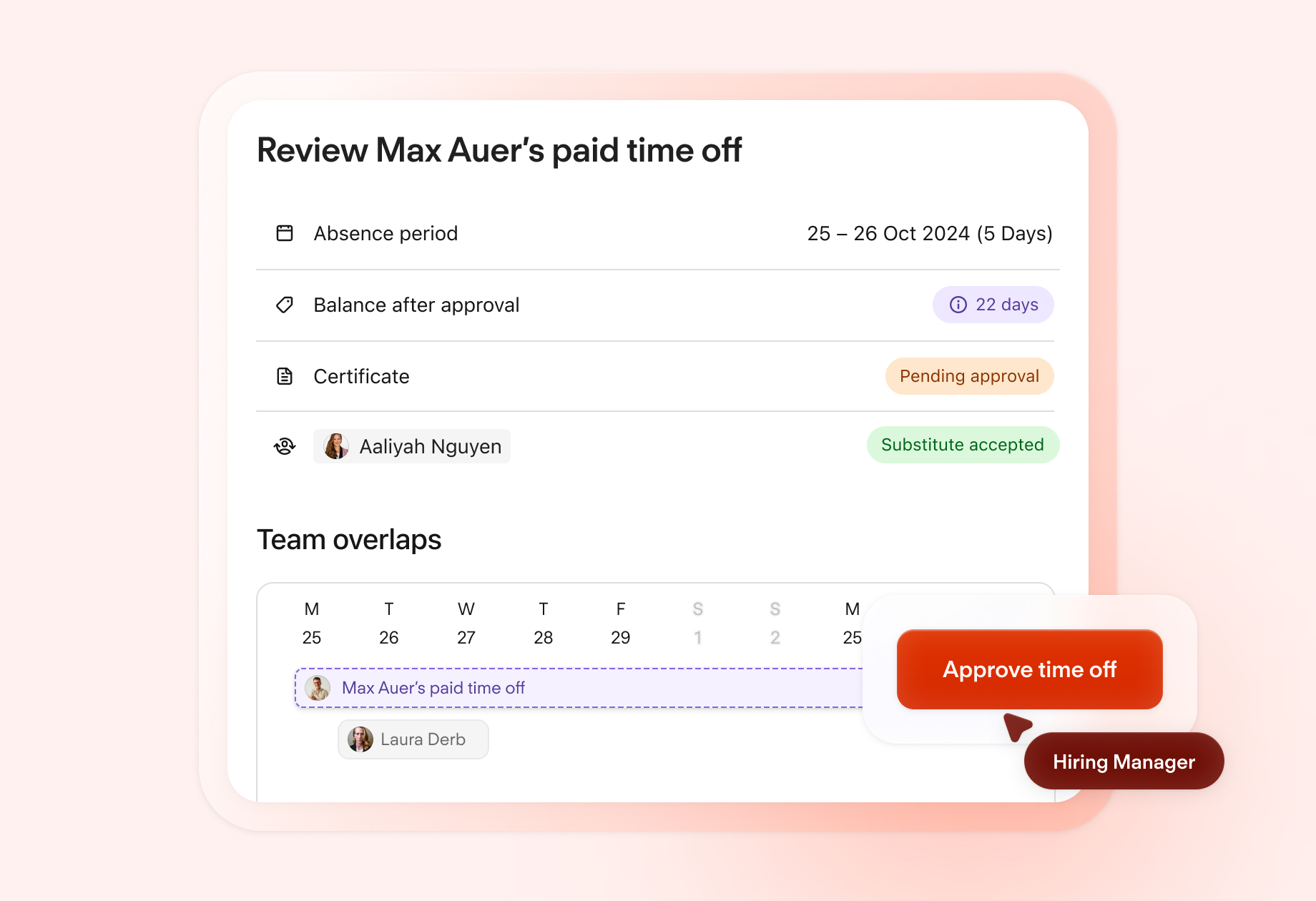18. May 2021
How Do You Know It’s Time To Switch HR Solutions?

Change may not be the easiest thing in the world, but changing to the right HR solution can lead to a whole new, more productive world for your organization. But, how do you know when it's time to make the switch? There’s as much to consider as there is to gain.
In one of our most recent webinars, we invited HR professionals from a host of European companies to discuss the topic of "How do you know when it’s time for a new HR solution?" They shared their collection of experiences, insights, and best practices for you to enjoy.
Watch the webinar for yourself by clicking this link right now.Making The Switch: Where Do You Begin?
If you know you need to switch HR softwares, first you have to choose the right one. Here, there are a host of considerations you need to make. To make this process a bit easier, we invited a panel of experts who have recently made the switch to Personio.
Led by Personio’s Head of Brand and Comms, Laura Schroeder, this discussion included the following HR leaders:
Lisa Wagner, Head of HR, crosscard
Beate Jaschik, Head of Corporate Development & HR, ic! berlin brillen
Mila Cano, Chief Human Resources Officer, Clicars
Each shared their own personal experiences with knowing when to switch, how to come to the right decision, and then how to implement and analyze the benefits. Here’s a handful of the insights they helped uncover…
Insight #1: Evaluate & Re-Evaluate
While many companies are likely to have some sort of HR tool in place, it’s highly likely that the tool in question is only covering a part of their entire range of core HR processes. In those cases, the decision to switch is often made for you.
As Lisa Wagner notes, “It was a no-brainer. We needed something because we didn’t have a recruitment tool… there were emails floating around, Excel spreadsheets, and random chats. It was a mess.”
What it comes down to, though, is placing an emphasis on evaluation. That means not only evaluating your needs immediately after implementing a software but continuing to evaluate your needs over a period of time.
Beate Jaschik expands on this idea: “When you change a software, it’s different because you already have a system in place and it is probably kind of working. But, you have to find out what’s not working and where are the opportunities that you’re not capitalizing on at that moment.”
Over time, especially as a company is growing, their needs change. And, over time, the deficiencies of a solution may reveal themselves. At that point, it comes time to seriously consider a new solution.
But, that can reveal itself in different ways. As Mila Cano puts it, “The main warning sign is when employees don’t use the tool. This is the clearest sign and, in our case, it was because the tool was very complex and didn’t offer any value to our managers.”
One solution is not always going to be the perfect solution forever, each of the panelists agreed. But now that you know it’s time to switch, how do you decide?
Free Download: Evaluating An HR Software

What key steps should you take when it comes to evaluating the ideal HR software for your organization? We outline the eight steps we think you should place the most emphasis on right here.
Download TodayInsight #2: Take Time to Decide
The first step is to outline the business case for switching from one HR software to another, which is likely to differ across organizations.
For Mila, this meant a process “Starting with a proposal in HR, and then involving the founders who understood our needs very quickly. Finally, we involved the steering committee to use them as a sponsor. Then, we introduced the IT department and the training business area.”
This meant a vast collection of not only feedback, but of requirements. In fact, when deciding to switch, each panelist agreed that it comes down to having a ‘wish list’: compiling the ‘need-to-have’ and ‘nice-to-have’ elements of a desired HR solution.
“I had a long list of wishes in the beginning, and started looking for a system and solutions that might work for us,” Beate explains.
And, sometimes the stars align and the timing is just right, as is the case with Lisa: “We were already in the middle of a change process, so we were reviewing all of our tools anyway. We more or less agreed on a new tool within 10-15 minutes.”
Insight #3: Decisions, Decisions
After deciding that it’s time to make the switch, while looping in all the right stakeholders and compiling a wish list, what decisions powered the choice to go with a software like Personio?
In Beate’s eyes, it begins with the basics. That could include:
A list of employees
Basic information about each
Customisation
That level of customisation was critical for each panelist. This also meant understanding how their new software could grow in the future, and how new, additional functions could inspire their own teams to get better at what they do.
As a company that was growing quite quickly, Mila also knew that “We were looking to eliminate inefficiencies and find a system that could adapt to our way of working, instead of our organization adapting to it.”
That meant a tool that not only could be customised to suit their unique needs, but one that could be a seamless fit for their culture. And, in some cases, help bolster their culture or prop up their core values.
Ultimately, Beate sums it up best: “What you need is a strong partner in change management. It is crucial that the system is a partner, as well as the partner for future development.”
Insight #4: Avoiding Legal Pitfalls
Switching HR software can also come about due to issues with your current software. One of these, especially for European countries, is data security and GDPR compliance.
As Beate notes, “We had a different system in place, an American system, and you always have questions about GDPR issues and data security, like the location of the servers, and when people don’t trust the system — because they think the data isn’t safe — then they don’t want anything else within that system.”
The same concerns were shared by Lisa, as well: “We had similar issues in the past where there were always questions around GDPR, whether our data is safe, concerns people didn’t feel comfortable to share their banking details, for example, and even though you assure them…there were still concerns. I understand it, so as we are focused on the European market, it makes sense to switch to a tool where GDPR is not a question at all. Where GDPR is covered and everybody feels safe and secure.”
Ultimately, each participant noted that Personio’s ability to handle data security, across a multitude of European markets, not only helped them feel more confident, but led to an increase in overall employee confidence across the organization.
Insight #5: The Right Time, with the Right Support
Now that we know it’s time for a change, have found our requirements, and have decided to make the switch, what happens next?
The fact is that making the change at the right time, with the right support, can save time and money and allow HR to work more strategically.
Choosing a solution is one thing, but getting it live is another. Each panelist identified the fact that Personio’s Implementation Team played a key role in their decision to switch softwares, and that in most cases all it took was around 6-8 weeks to get everything going.
“I was worried mostly that this will take too much of my time, and that there will be data missing…I was really, really surprised at how smoothly everything went and thankful for the Implementation Team at Personio,” Mila notes.
The element of support here was important for the sake of time, the security of data, and also the results. Since implementing Personio, not only do they each have the support they need (whenever they need it) but the time to focus on more strategic initiatives.
“Now we have at least combined three topics, administration, recruitment, and payroll, into one access point. This definitely saves us a lot of time,” Lisa explains.
And reporting is simpler, too: “If you get a report in one click, all of a sudden everyone else in the company is jealous of our HR department,” Beate notes.
Lastly, Mila also dives into how it has helped her company hire and onboard employees with greater effect: “New joiners feel more part of the company, can find their coworkers much more easily, and we publish all of our policies and communications on Personio, too. It helps us to manage our remote workers in so many different ways.”
How Should You Gear Up To Make The Switch?
If we take it back to the beginning, before the decision and the switch is made, what should companies keep in mind before they switch HR solutions?
First, Lisa mentions how important it is to centralize HR tasks into one solution, “Figure out what you need and how you can combine tools…there is hardly ever a tool that fits your needs, but you need to make a wish list and to focus on that.”
Mila encourages switchers to focus on processes: “The most important thing is to have clear what are the processes that are critical and what processes are complementary. Focus on the critical processes, because we need the key processes well-implemented in the tool.” says Mila.
Lastly, Beate implores companies to expand their scope to ensure a switch is good for business and for HR: “It is really important to think about the impact we are making for the entire company… switching should always be aligned to the company’s overall strategy.”
Interested in learning more? You can watch the webinar in its entirety by clicking on the video below…
H.U.G Online Sessions: How do you know when it's time for a new HR Solution?

We need your consent to load this service!
This content is not permitted to load due to trackers that are not disclosed to the visitor.

